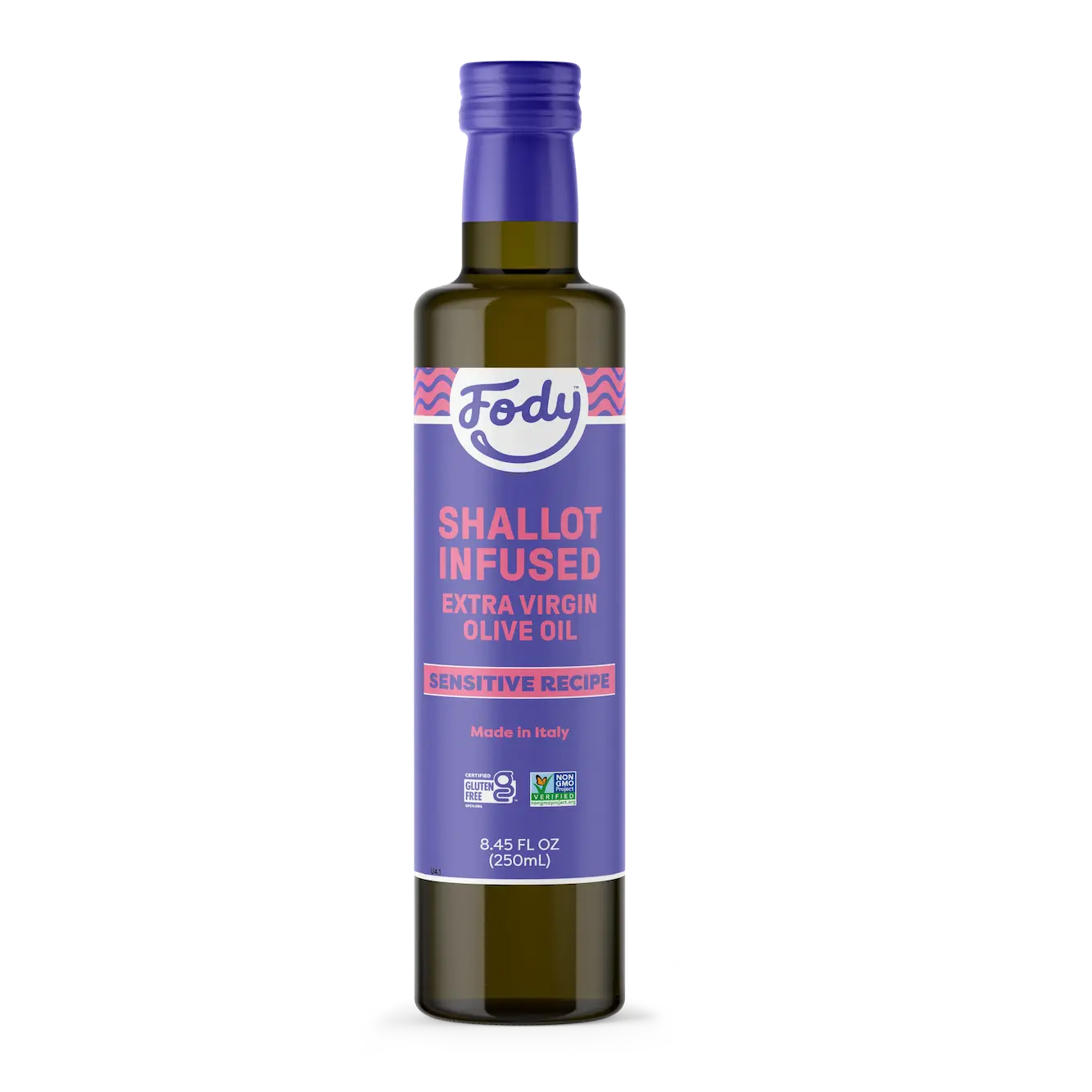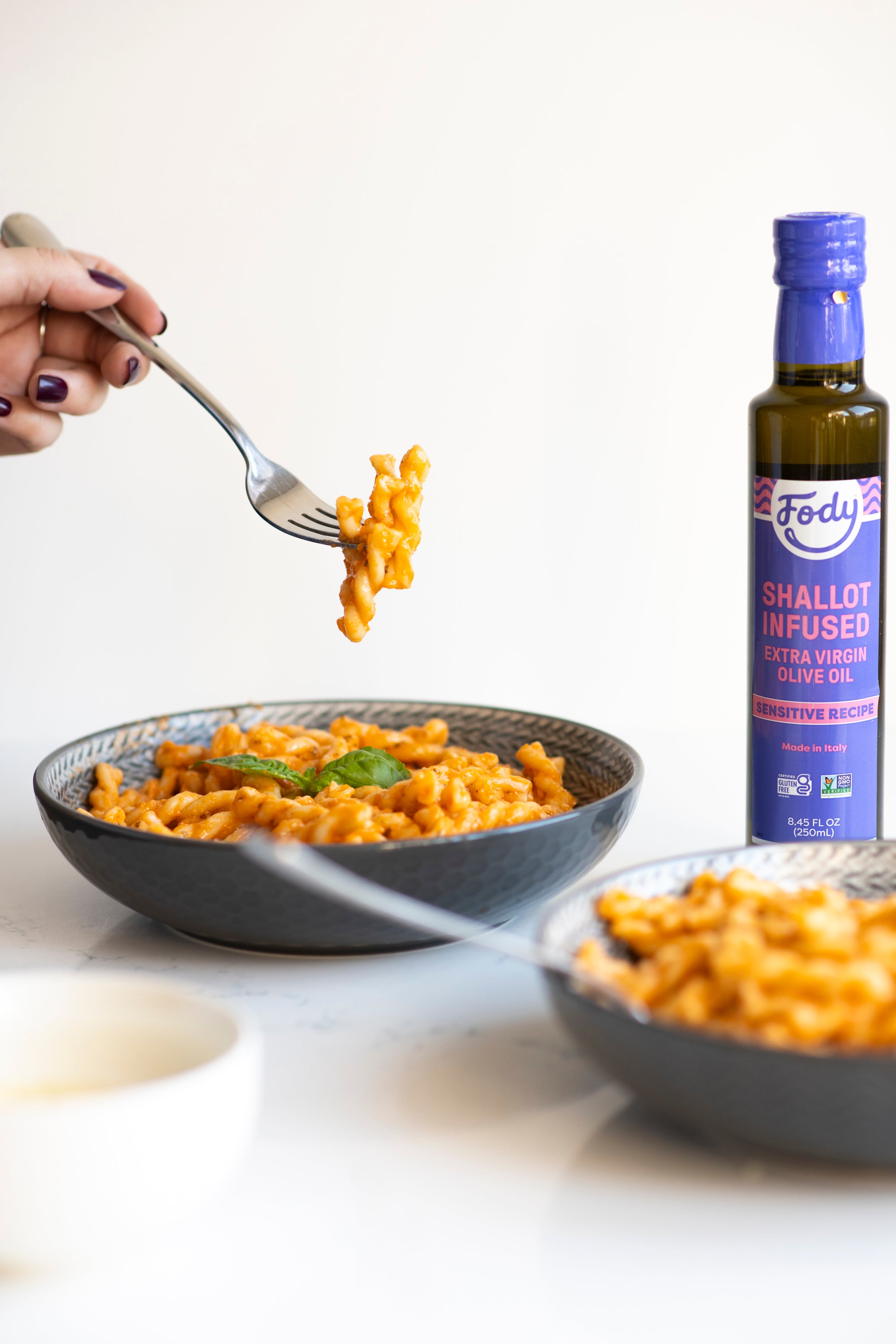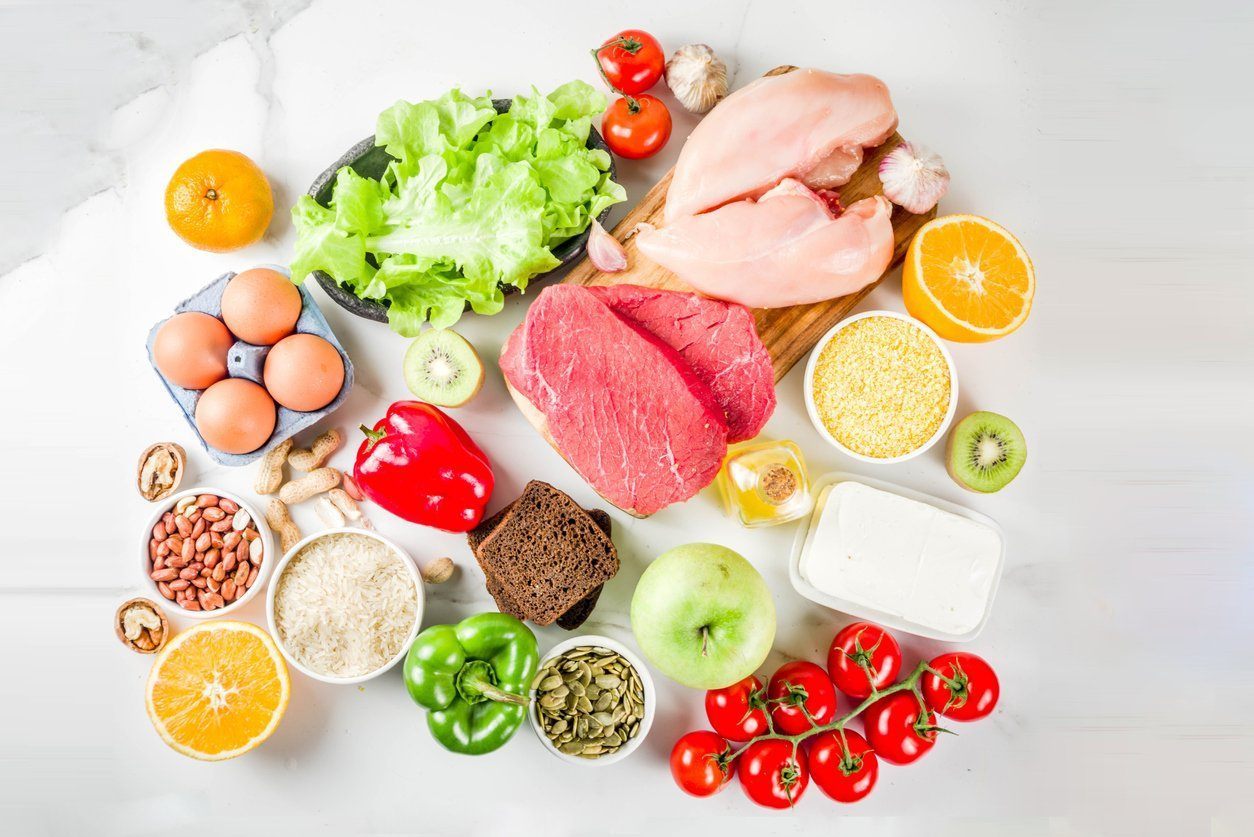

What is FODMAP Stacking?
Even if you’re in the green for particular FODMAP groups, you still need to be cautious and mindful of FODMAP stacking.
FODMAP stacking is when you eat two or more servings of foods from the same FODMAP group in one sitting. This ‘stacking’ of FODMAPs can happen even if the foods are ‘green light’ items for your food intolerance.
Stacking an excess of FODMAPs from one group shifts your low FODMAP diet to high, leading to those dreaded irritable bowel syndrome (IBS) symptoms.
When You Need to Worry About FODMAP Stacking
If you’re following a low FODMAP diet and it’s led to a moderate improvement to most of your IBS symptoms, but you still have occasional flare-ups, FODMAP stacking could be the issue.
In healthy individuals, it takes 12 – 48 hours on average for food to move from the mouth to the toilet bowl. FODMAPs start brewing those IBS symptoms when foods reach the large bowel, so if you’re eating FODMAPs from the same group in quick succession, they can stack and cause stomach problems before they’re excreted.
How to Avoid FODMAP Stacking
There’s no one-size-fits-all solution to FODMAP stacking – everyone has different tolerances to FODMAPs, making it impossible to develop blanket rules.
But there are some ways to generally avoid FODMAP stacking while on a low FODMAP diet:
- Space out your meals: It takes 1-2 hours for food to move through the large bowel, so spacing out meals every 3-4 hours can prevent additive effects of FODMAPs from the same group.
- Eat a variety of foods: Avoiding FODMAP stacking comes naturally to those eating a variety of foods compared to people who eat the same meals over and over again. Instead of eating one large lump of a certain vegetable, for example, try a vegetable medley. You can add more FODMAP-free foods to your diet to be sure you aren’t FODMAP stacking, too.
- Don’t eat too much fruit: Many fruits are comprised of multiple FODMAP groups, meaning a higher likelihood of FODMAP stacking. Try limiting your fruit intake to one Monash-green fruit per sitting. Produce like strawberries, mandarins, grapes, and oranges are safe to eat in abundance, as they’re FODMAP-free.
- Consider more FODMAP-free foods: You don’t need to worry about stacking FODMAPs if you aren’t eating FODMAP foods to begin with. That’s 4-D chess right there. Incorporate more FODMAP-free foods that have no upper limit on serving sizes, and eat to your heart’s content. Consider foods like rice, strawberries, carrots, and anything else that have nothing but the ‘green light’ on your Monash University Low FODMAP Diet app.
Reference:
FODMAP Stacking – Can I Overeat ‘Green’ Foods? – Monash University
Learn more about FODMAP foods, the low FODMAP diet, and IBS on our Fody Foods blog, and check out our pantry of low FODMAP food products!
So, what are you waiting for?
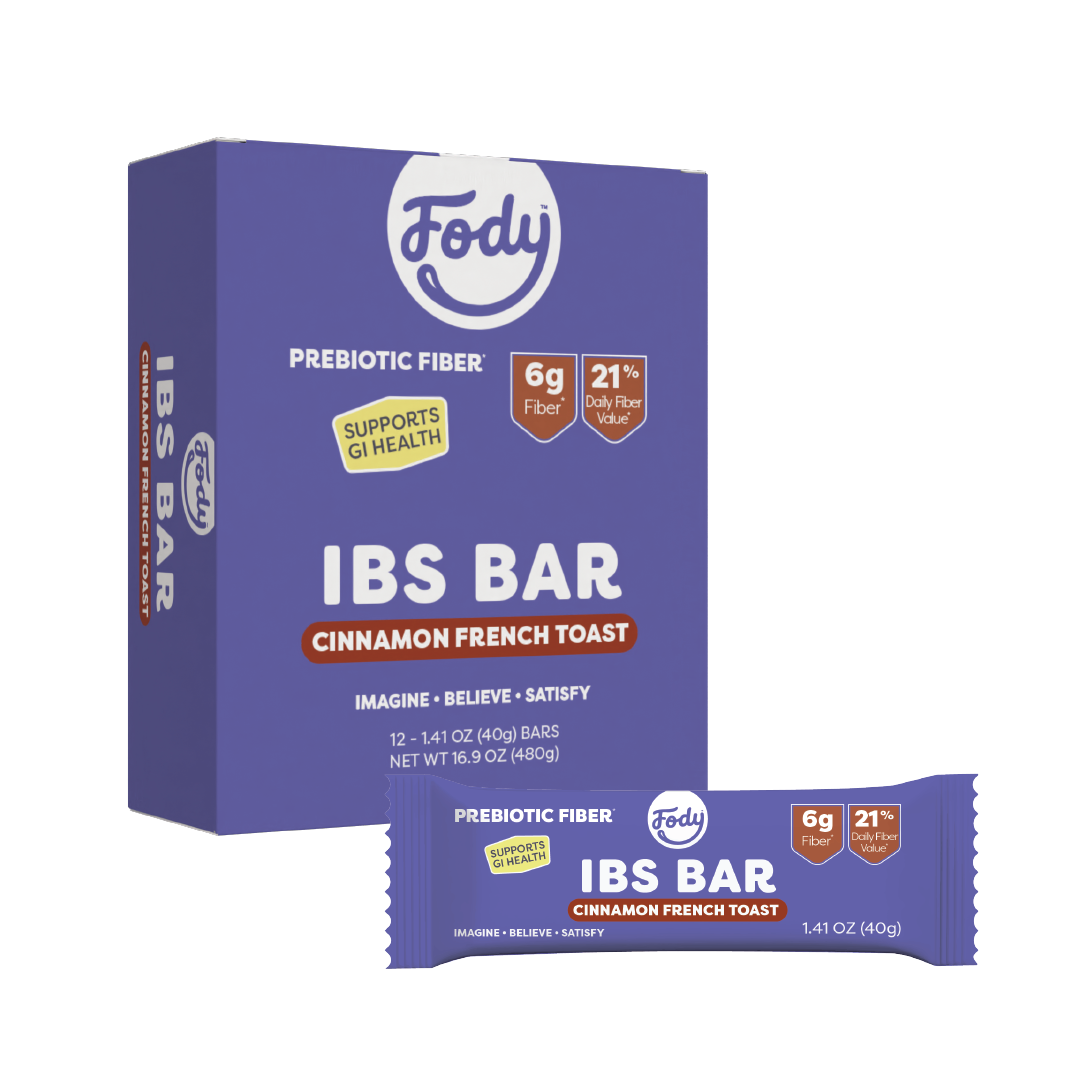
 Cinnamon French Toast High Fiber Snack Bar - 12 Pack
Cinnamon French Toast High Fiber Snack Bar - 12 PackCinnamon French Toast High Fiber Snack Bar - 12 Pack
$32.99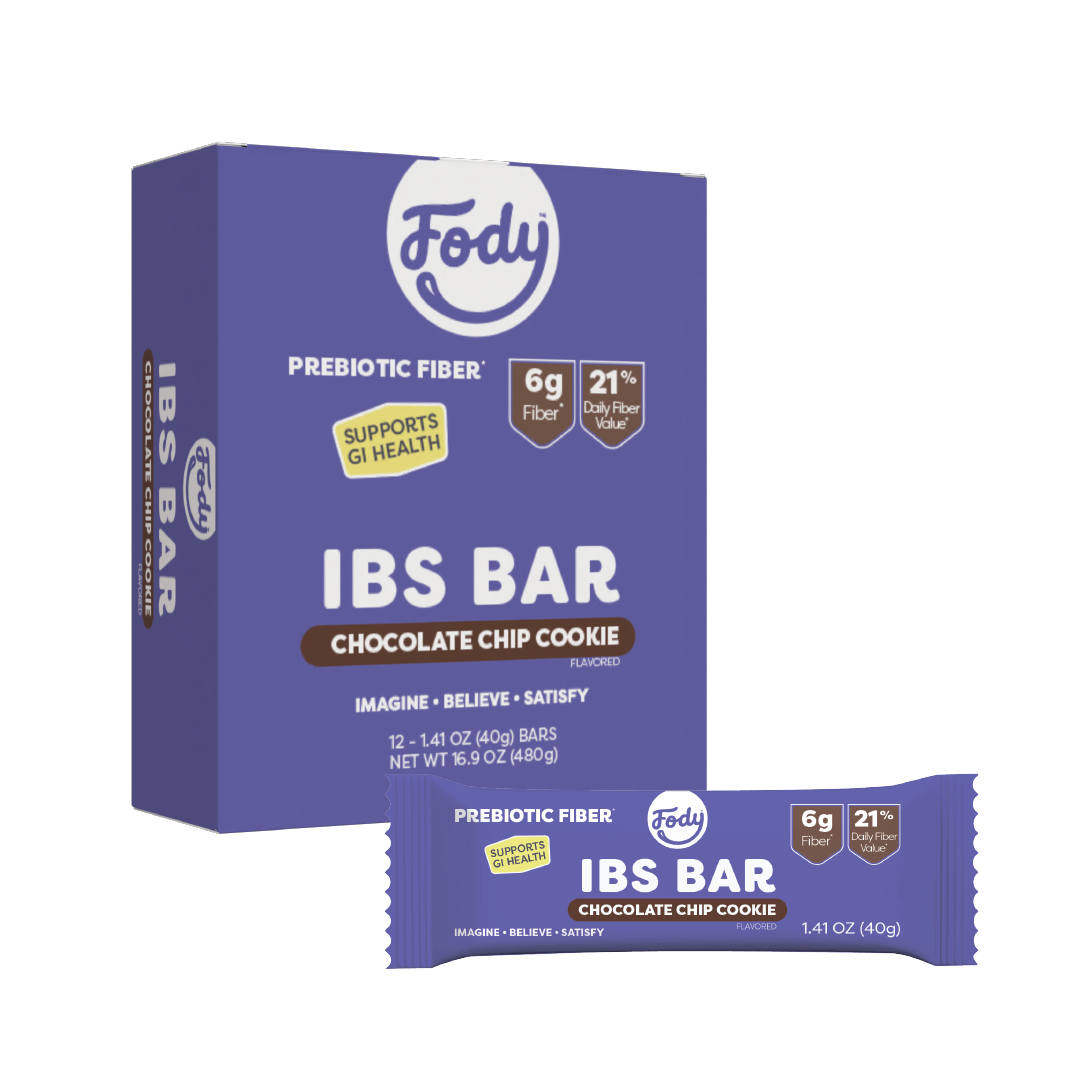
 Chocolate Chip Cookie High Fiber Snack Bar - 12 Pack
Chocolate Chip Cookie High Fiber Snack Bar - 12 PackChocolate Chip Cookie High Fiber Snack Bar - 12 Pack
$32.99











